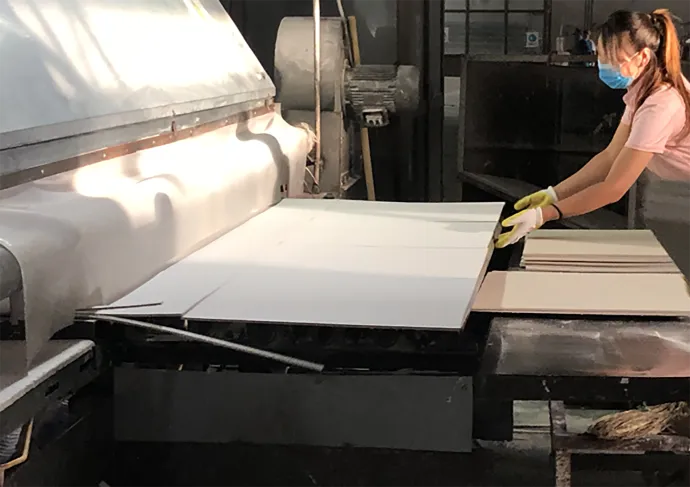- Afrikaans
- Albanian
- Amharic
- Arabic
- Armenian
- Azerbaijani
- Basque
- Belarusian
- Bengali
- Bosnian
- Bulgarian
- Catalan
- Cebuano
- Corsican
- Croatian
- Czech
- Danish
- Dutch
- English
- Esperanto
- Estonian
- French
- German
- Greek
- Hindi
- Indonesian
- irish
- Italian
- Japanese
- Korean
- Lao
- Malay
- Myanmar
- Norwegian
- Norwegian
- Polish
- Portuguese
- Romanian
- Russian
- Serbian
- Spanish
- Swedish
- Thai
- Turkish
- Ukrainian
- Uzbek
- Vietnamese
ພ.ຈ. . 09, 2024 07:56 Back to list
Access Solutions for Ceiling Inspection Hatches for Efficient Maintenance and Safety
The Importance of Ceiling Inspection Hatches An Overlooked Asset in Building Maintenance
In the realm of building maintenance and construction, several elements often go unnoticed until they become problematic. One such crucial feature is the ceiling inspection hatch. Despite their relatively small size, inspection hatches play a pivotal role in ensuring the safety, functionality, and longevity of various building systems. This article will delve into the significance of ceiling inspection hatches, their benefits, types, and best practices for installation and maintenance.
What is a Ceiling Inspection Hatch?
A ceiling inspection hatch is a removable panel or door built into ceilings to provide access to the space above for inspection, maintenance, and repair of mechanical systems, electrical wiring, plumbing, and insulation. These hatches allow building maintenance personnel to easily access unavailable areas without significant disruption to the building’s structure or aesthetics.
The Importance of Ceiling Inspection Hatches
1. Access for Maintenance
One of the primary functions of ceiling inspection hatches is to facilitate easy access to crucial building systems. Regular maintenance of HVAC systems, electrical conduits, and plumbing fixtures is vital in preventing costly repairs and ensuring optimal performance. Without inspection hatches, maintenance personnel would have to create access points through drywall or ceilings, resulting in more significant disruption and higher repair costs.
2. Safety and Code Compliance
Building codes often require access to certain systems for inspection and maintenance purposes. Ceiling inspection hatches help ensure compliance with local regulations, lowering the risk of costly fines or penalties. Additionally, they enhance safety by allowing easy checks on fire safety systems and other essential equipment, ensuring they are in proper working order.
3. Cost-Effectiveness
While the initial installation of a ceiling inspection hatch might represent a minor expense, the long-term savings it offers are substantial. By providing a designated access point for inspections and repairs, these hatches help to minimize labor costs and the potential for damage that might incur if a more invasive approach were required.
4. Enhanced Building Infrastructure Longevity
Regular inspections facilitated by ceiling hatches can lead to early detection of potential issues, allowing for timely repairs that prevent further damage. This proactive approach aids in extending the lifespan of the building’s infrastructure, reducing overall maintenance and replacement costs.
Types of Ceiling Inspection Hatches
Ceiling inspection hatches come in various types depending on their intended use and the building’s specific requirements
ceiling inspection hatch

1. Standard Hatches These are the most common type, available in various sizes and finishes, typically made of metal or plastic.
2. Fire-Rated Hatches Designed to meet specific fire safety regulations, these hatches contain materials that can withstand high temperatures, which is crucial in fire prevention strategies.
3. Access Panels with Insulation These panels are insulated to help maintain temperature regulation within a building, making them ideal for spaces requiring thermal control.
4. Waterproof Hatches Useful in areas prone to moisture or water exposure, these hatches are designed to prevent water ingress, protecting the systems behind them.
Best Practices for Installation and Maintenance
Installation
1. Location Selection Choose the hatch’s location wisely to ensure ease of access while minimizing visual disruption.
2. Professional Installation Consider hiring professionals for installation, especially for larger or fire-rated hatches, to ensure compliance with all codes and regulations.
Maintenance
1. Regular Inspections Schedule regular checks of the hatch and adjacent systems to ensure accessibility and functionality.
2. Clear Access Keep the area around the hatch clear of clutter to facilitate easy access when maintenance is necessary.
3. Seal Integrity Frequently inspect the seals around the hatch to prevent dust, pests, or moisture from entering.
Conclusion
Ceiling inspection hatches may seem trivial at first glance, but their role in building maintenance is undeniable. By allowing easy access to vital systems, ensuring compliance with safety codes, and facilitating proactive maintenance, these often-overlooked features prove their worth in the efficient management of a building. Property owners and managers should recognize the importance of these hatches, prioritize their installation and upkeep, and ultimately contribute to the long-term sustainability and safety of their structures.
-
Transform Interiors with PVC Gypsum Ceiling: A Stylish, Durable, and Moisture-Resistant SolutionNewsMay.19,2025
-
The Smart Interior Upgrade: Discover the Durability and Versatility of Gypsum Ceiling Access Panel SolutionsNewsMay.19,2025
-
The Smart Choice for Interior Design: Discover the Value of PVC Gypsum Ceiling SolutionsNewsMay.19,2025
-
Mineral Fiber Ceiling Tiles: The Smart Blend of Performance and AestheticsNewsMay.19,2025
-
Mineral Fiber Ceiling Tiles: The Superior Choice Over Gypsum for Sound and Fire SafetyNewsMay.19,2025
-
Mineral Fiber Ceiling Tiles: Eco-Friendly Strength and Style for Every CeilingNewsMay.19,2025







